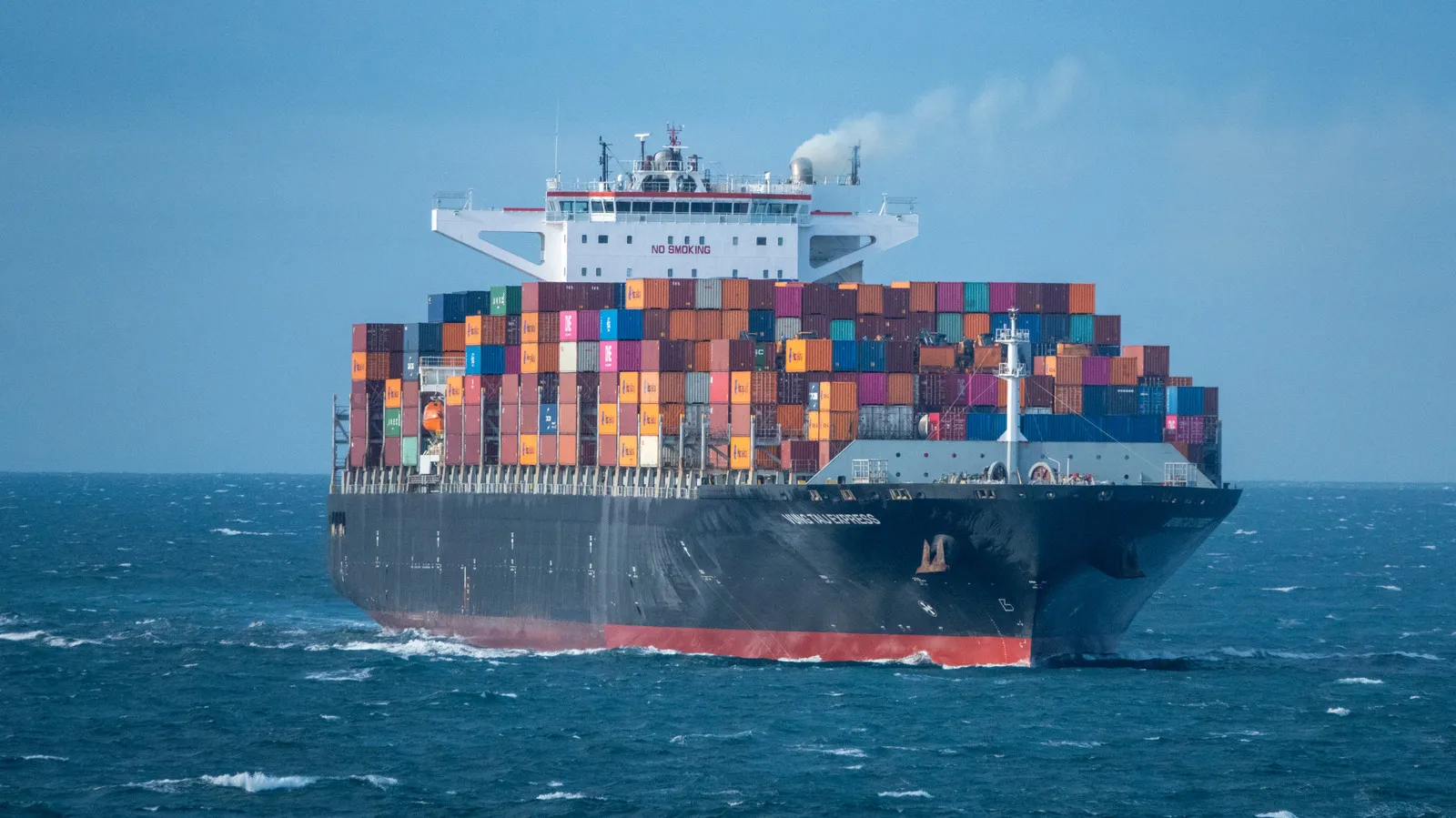Container Ship Speed: Fastest vs. Slow Steaming Facts

Container ships are the unsung giants of global trade, transporting over 90% of the world’s goods across vast oceans. While their immense size often captures our attention, it’s their impressive engineering and operational strategies that truly define their role in modern commerce. Many might be surprised to learn that these colossal vessels are capable of remarkable speeds, yet often choose to sail at a more measured pace. This decision is driven by a combination of fuel efficiency, emissions reduction, and safety considerations, revealing a complex balance between speed and sustainability. In this exploration, we will delve into the fascinating world of container ship speeds, the rationale behind slow steaming, and the implications for our environment and economy.
| Aspect | Details |
|---|---|
| Importance of Cargo Ships | Cargo ships move over 90% of global products and goods. |
The Enormous World of Container Ships
Container ships are some of the largest vessels on the planet, designed to carry thousands of shipping containers filled with goods. These ships are crucial for global trade, moving over 90% of the products we use every day. Imagine a floating city, with towering stacks of containers! Despite their immense size, these ships can cruise at surprising speeds, making them essential for delivering goods efficiently across oceans.
The engines of these giant ships are also impressive. They are built to power the massive structure through rough waters and harsh weather. However, container ships face challenges like piracy and severe ocean conditions that can knock containers overboard. This makes it essential for shipping companies to ensure the safety and security of both the ship and its cargo, as they navigate busy trade routes around the world.
Why Speed Matters for Cargo Ships
While container ships are capable of reaching high speeds, most travel at slower rates to save fuel and reduce emissions. For example, cruising at 21 knots instead of 24 can save a ship about 33% of its daily fuel usage. This is important, as fuel costs can significantly impact shipping companies’ bottom lines. By traveling a bit slower, they can still deliver goods on time while being kinder to the environment.
Shipping companies also consider the safety of their vessels. In crowded waters, like the English Channel, high speeds can make it difficult to maneuver. Slower speeds allow ships to respond better to other vessels and obstacles, reducing the risk of accidents. This balance between speed, fuel efficiency, and safety is crucial for ensuring that cargo ships can operate smoothly and keep the flow of goods moving across the globe.
The Importance of Slow Steaming
Slow steaming is a practice where container ships travel at reduced speeds, typically between 18 and 20 knots. This method significantly lowers fuel consumption and emissions, helping to protect the environment. Studies show that even a small decrease in speed can lead to a large drop in harmful emissions. For shipping companies, this means they can contribute to cleaner oceans while still transporting goods efficiently.
In addition to environmental benefits, slow steaming also helps in managing costs. By using less fuel, shipping companies can save money, which can be crucial during times of economic instability. This strategy not only benefits the planet but also supports the shipping industry, allowing it to adapt to changing market demands while maintaining a commitment to sustainability.
The Engineering Marvels Behind Container Ship Engines
Container ship engines are engineering marvels designed to power these colossal vessels across oceans. Typically, these engines are large, low-speed diesel engines that convert fuel into energy to drive the ship. The size and power of these engines are astonishing, with some capable of producing over 80,000 horsepower, enough to propel a fully loaded ship at sea. This immense power is crucial for overcoming the resistance of water and achieving the necessary speed, even in challenging conditions.
The construction of these engines involves advanced technology and precision engineering. Manufacturers use high-strength materials that can withstand extreme conditions, such as high temperatures and corrosive saltwater. Additionally, modern container ship engines are equipped with sophisticated control systems that optimize fuel consumption and reduce emissions. This innovation allows for better performance while being more environmentally friendly, showcasing how technology can enhance operational efficiency in maritime transport.
Understanding the Economics of Slow Steaming
Slow steaming, a practice adopted by many shipping companies, is a strategic response to the high costs associated with fuel consumption. By cruising at lower speeds, typically between 18 to 20 knots, vessels can significantly reduce their fuel expenses. Shipping companies are increasingly recognizing that the trade-off between speed and fuel efficiency can lead to considerable savings over long voyages. This economic strategy not only helps companies remain competitive in a fluctuating market but also aligns with environmental goals.
Moreover, slow steaming contributes to a more sustainable shipping industry. With rising concerns about climate change and the shipping sector’s carbon footprint, reducing cruising speeds helps lower greenhouse gas emissions. A decrease in speed can result in substantial reductions in pollutants released into the atmosphere. As the industry continues to evolve, slow steaming represents a pragmatic approach that balances economic viability with environmental responsibility, paving the way for more sustainable practices in maritime logistics.
Navigating the Challenges of Marine Traffic
The world’s oceans are major highways for cargo ships, but navigating these waters comes with its unique set of challenges, particularly in congested areas like the English Channel. With over 500 ships navigating through these busy routes daily, the risk of collisions and accidents increases significantly. Container ships, due to their size and weight, require longer distances to maneuver, making speed management crucial for safety. This necessitates a careful balance between maintaining schedules and ensuring the safety of the crew and cargo.
Furthermore, the growth of global trade has intensified the pressure on shipping lanes, leading to stricter regulations and increased monitoring of maritime traffic. Shipping companies must now consider not just speed and fuel efficiency, but also the implications of their operations on marine ecosystems and local communities. By adopting slower speeds and implementing advanced navigational technologies, the industry aims to enhance safety while minimizing environmental impact, demonstrating a commitment to sustainable shipping practices.
Safety Protocols for Hazardous Cargo
Transporting hazardous cargo poses significant risks for container ships, necessitating stringent safety protocols to mitigate potential disasters. Electric vehicles, for instance, carry lithium-ion batteries that can ignite under certain conditions, raising concerns about onboard fires. Shipping companies must adhere to strict regulations regarding the transport of such hazardous materials, including proper labeling, training for crew members, and emergency response plans to address potential incidents.
In addition to regulatory compliance, shipping companies are investing in advanced technology to enhance safety. This includes real-time monitoring systems that track cargo conditions and alert crews of any risks. By implementing these measures, the shipping industry aims to prevent accidents and protect both the crew and the environment. As global trade continues to evolve, the focus on safe transport of hazardous materials remains paramount, ensuring that the benefits of global commerce do not come at the expense of safety.
Frequently Asked Questions
What is a cargo ship and why are they important?
A **cargo ship** is a large ship designed to carry goods across oceans. They are important because they transport over **90%** of the world’s products, helping businesses and people get what they need.
How fast can cargo ships go?
Most cargo ships travel at around **24 knots** (27.6 miles per hour), but some can go faster. For example, the **Sea-Land Galloway** once reached **33 knots** (38 miles per hour)!
Why do cargo ships travel slower sometimes?
Cargo ships often travel slower to save **fuel** and reduce **pollution**. Slowing down by just **10%** can cut harmful emissions by **19%**, which is better for the planet!
What is ‘slow steaming’ in shipping?
**Slow steaming** is when ships travel at slower speeds, usually between **18 and 20 knots**. This method helps save fuel and lowers air pollution, making shipping more eco-friendly.
How does speed affect cargo ship safety?
Traveling faster can be risky because cargo ships need a long distance to stop. In busy areas like the **English Channel**, where many ships are, slower speeds help them maneuver safely.
Can electric vehicles cause fires on cargo ships?
There are concerns that **electric vehicles** can catch fire during transport on cargo ships. This has raised questions about safety, but shipping companies are working on solutions to prevent accidents.
What happens to containers in bad weather on cargo ships?
In **harsh weather**, strong winds can knock containers off cargo ships. This is a big risk that shipping companies monitor closely to keep goods safe during their journey.
Summary
The content discusses the significance and mechanics of container ships, which transport over 90% of global goods despite facing risks like piracy and harsh weather. It highlights the impressive speeds of these vessels, with an average cruising speed of 24 knots, and records show some can reach up to 33 knots. However, many ships operate at slower speeds due to economic considerations and environmental regulations, as slow steaming reduces fuel consumption and emissions. This strategy not only saves costs but also enhances safety in congested waterways, making cargo shipping both efficient and environmentally conscious.






